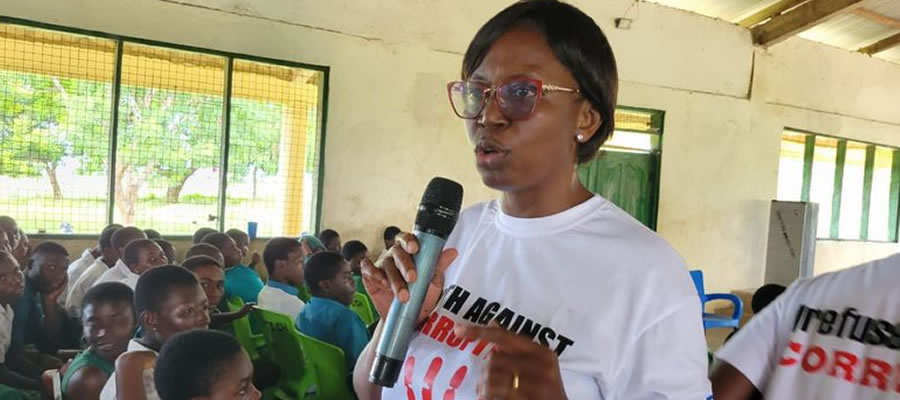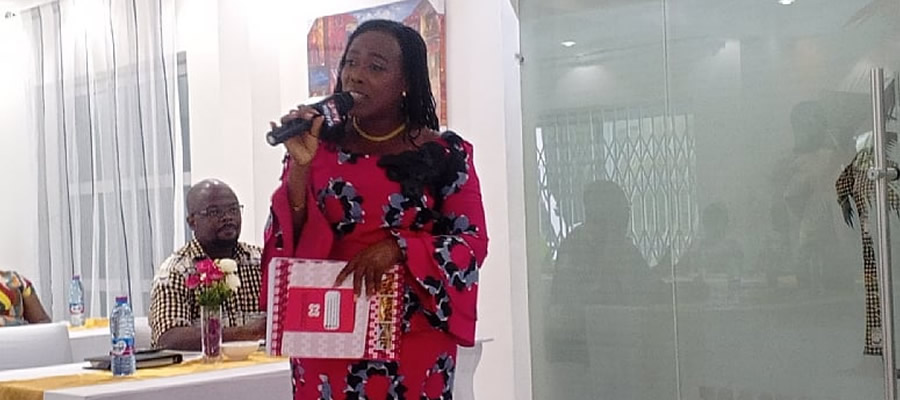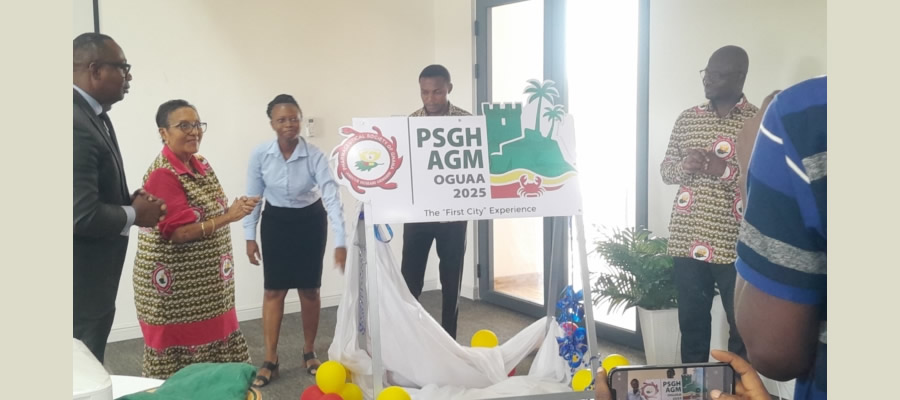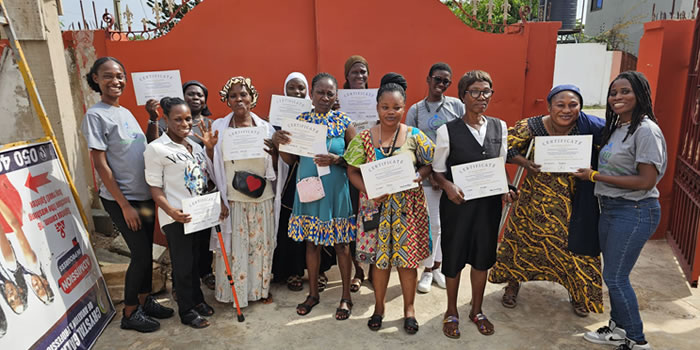

It is the a vowed aim of the Cape Coast Metropolitan Assembly (CCMA) to take advantage of the Government’s declaration of “Golden Age of Business in Ghana” to aggressively pursue prudent, private-sector friendly programmes and projects geared towards accelerated socio-economic development of the Municipality.This website therefore has been designed to serve as a mirror for showcasing the enormous investible potentials of the Municipality to both local and foreign investors to take advantage of, in the areas of education, trade and tourism.
Additionally, structures have been provided to remove bureaucratic constraints to investment by utilizing the prevailing congenial socio-economic milieu that exists.The Cape Coast Metropolis is endowed with historical, traditional and cultural resources, factors which have made the Metropolis a true tourism destination. The World Heritage sites in the Municipality and neighboring Elmina, the canopy walk-way of the National Park are some of the tourist attractions local and foreign investors can take advantage of.
The Metropolis also hosts the biennial pan-African Historical Theatre Festival (PANAFEST) which brings together Africans and those in the diaspora as well as other tourists who want to trace their roots and to sample our rich cultural values and hospitality.This website has therefore been created to catalogue some of the exciting economic, cultural, social and political facilities of the Cape Coast Metropolitan which will goad any investor into making the municipality his one-stop residence. Areas in the Metropolis include Tourism – Hospitality industry; Transportation; Recreation; Fishing; Agro-based Industries and Storage.
There is also the availability of cheap labour and research centers which an investor can take advantage of. The platform for investment is thus set for investors to contribute to the attainment of the Mission of the Cape Coast Metropolitan Assembly – “The Cape Coast Metropolitan Assembly has an obligation to ensure qualitative improvement in the living conditions of the people of the Municipality by effectively mobilizing available resources to improve services that meet their needs”.
Background History
The traditional name of Cape Coast, ‘Oguaa’, which is still in use, is derived from the Fante word ‘gua’ (market).The time of Portuguese colonization, Oguaa was named Cabo Corso (Short Cape). Later the name was changed by the English to Cape Coast.The collapse of the ancient Ghana Empire in the Sudan, west of the Niger bed, set in motion a wave of migration southward around the 12th century. Among the various groups of people that moved southward in search of habitable lands were the Fetu (Efutu).
The kingdom they eventually founded after moving southward through Techiman and Adansi (Akrokeri) dates back to the 14th century, with Efutu which is situated about twelve miles north of present Cape Coast as its capital. Legend has it that an early king of the Fetu had as his chief delicacy, crabs which he tasked his people to provide in copious quantities. It was in search of this delicacy to please the king that his people stumbled on a sheltered bay at the beach, protected by rock outcrops and by small running water filled with fishes, they found sufficient quantities of crabs they desired. Some of the people later settled down here and named the spot ‘Kotoworaba’ (crab hamlet), now adulterated to ‘Kotokuraba’.
The rock was given the name Tabir (or Taabi) and till today one of the seven titular gods of Oguaa (Cape Coast). As time went by, a small settlement and a market developed at Kotokuraba at which the exchange of other commodities came into being besides the crab catching occupation. Name of Kotokuraba survives till today as the biggest market in Cape Coast. As a result of this development, large numbers of traders from far and near converged at the area to sell and buy wares, and the name of the settlement became Oguaa. Persisted until 1555 when the first English manifest reached the Gulf of Guinea, and William Towerson landed at Oguaa.
He initiated a period of trade between the Europeans and the people of Fetu. Around 1600, a Portuguese group acquired a plot of land at Oguaa for 64 shillings, paid for in goods and built a Castle on the Rock, Tabir which was a sand structure. In 1637 the Castle was occupied by the Dutch who eventually extended it. For the following 27 years it was occupied in turns by the Swedes, the Danes, and again by the Dutch until finally in 1664 the English took possession of it, with Robert Holmes as leader of a joint force of English and Danes. the 17th and 19th centuries, at the height of the Slave Trade until its abolition, Cape Coast Castle which was one of the main trade posts, played a very important and historic role.
Besides their duties as warriors, the members of the asafo companies were often assigned to undertake civic responsibilities and also detailed for civil purposes during peaceful periods – they still exist today. With the occupation of the Castle by the English, the importance of Cape Cast as an administrative and commercial centre increased rapidly. Several merchant organizations established their headquarters there.The 18th century was relatively a quiet period of consolidation, during which Cape Coast enjoyed growing wealth and expansion. However, contrary to this development, the situation in Cape Coast became insecure due to the increasing growing in importance of the Ashanti Kingdom inland with its capital Kumasi.
And in 1805, the Ashantis conquered Cape Coast town, but they failed to capture the Castle. In order to halt any further inroads into what they considered their protectorate, the English built two more fortifications, Fort William (first called Smith’s Tower) on Dawson Hill in 1820 and Fort McCarthy on a hill northeast of the Castle in 1822. Fort William still exists, and is referred to now as the ‘light house’ because the Railway and Ports Authority later used it as a Light House. Fort McCarthy has however vanished. Under Governor McCarthy, the English tried to drive the Ashantis back, but the troops were defeated and Cape Coast town fell a second time in 1824.
At Dodowa in 1826, however, the Ashantis were defeated, and under Governor McLean, Cape Coast recovered entirely and expanded again.The headquarters of the Wesleyan Mission was then established in 1835, and many substantial buildings including the Wesleyan Chapel were subsequently bult. In 1850 the English acquired the Danish prosperities in West Africa and in the Treaty of Breda in 1872 the Dutch also ceded their possessions to the English, who eventually made a strong expedition under Sir Garnet Wolseley against the Ashantis in 1873, leading to the capture of Kumasi in February 1874.
Despite this important victory albeit, the years after saw Cape Coast deteriorate to an extent the effects of which are still being manifested today. Under Governor Dr. Rowe, from 1876 – 1877 the seat of the Colonial Government of the Gold Coast was transferred to Accra due to climatic and other reasons. The first railway project in the Gold Coast (running from the Castle one mile in the direction of Kumasi) was abandoned. important catastrophe to befall Cape Coast was the construction of the Sekondi Harbour in 1888, and the railway link between Sekondi and Kumasi in 1903.
Until this time, Cape Coast had been the most important port of the Gold Coast for the exportation of cocoa; but after this event, its importance diminished. In 1963 the port was finally closed down.The establishment of the first Secondary School, Mfantsipim in the Gold Coast at Cape Coast seems to have given a signal of another hope of development which gives the town a different importance and identity as the major educational center of the nation.
Major landmarks along the road to fame in this area include
- 1890, Establishment of the headquarters of the Roman Catholic Mission;
- 1950, the establishment of the Archdiocese;
- The establishment of other secondary schools; and
- The Foundation of the University.
Date Created : 11/16/2017 3:50:29 AM













 facebook
facebook
 twitter
twitter
 Youtube
Youtube
 +233 593 831 280
+233 593 831 280 0800 430 430
0800 430 430 GPS: GE-231-4383
GPS: GE-231-4383 info@ghanadistricts.com
info@ghanadistricts.com Box GP1044, Accra, Ghana
Box GP1044, Accra, Ghana